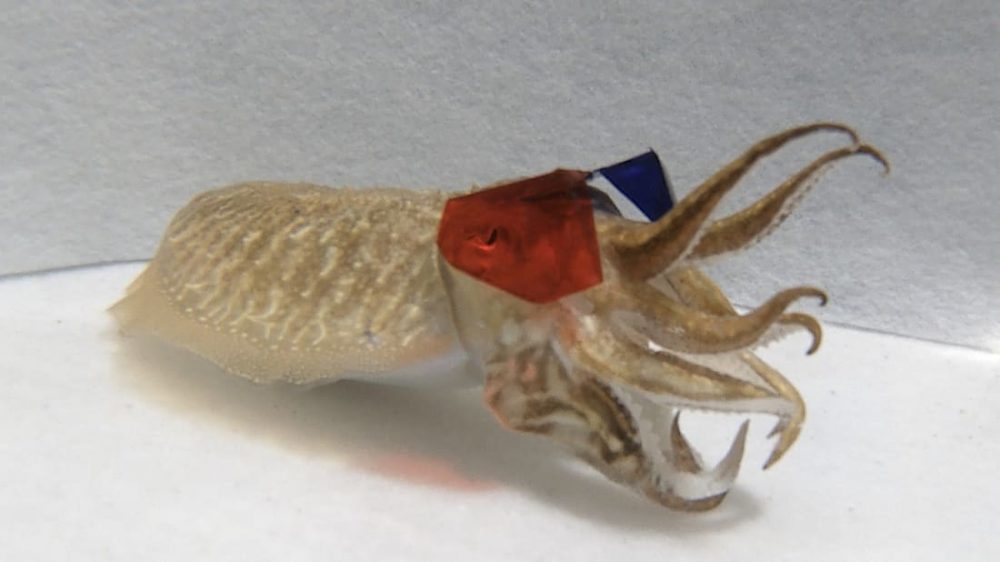After all these years, maybe we’ve finally found an audience for all those dusty, outdated 3D TVs. The only problem is most of them probably aren’t waterproof so even cuttlefish wouldn’t want them.
If you thought you’d heard it all when it comes to scientific experiments, here’s one you might have missed: Researchers at the University of Minnesota recently constructed a miniature underwater movie theater, outfitted a group of cuttlefish with 3D glasses. Why, you ask?
Researchers then showed the cuttlefish short movies of shrimp—all to see if humans and cuttlefish have more in common than we previously thought.
Cuttlefish, squid-like cephalopods with an internal shell, ensnare prey with one swift snatch of their tentacles. If they under- or overestimate their distance from whatever they’re eyeing, however, they’ll fail to grasp their prey and give away their position, too.
So, of course, Trevor Wardill, assistant professor in the University of Minnesota’s department of ecology, evolution, and behavior and his team, wanted to find out how cuttlefish are able to so accurately estimate distance.
Do Cuttlefish Movie Theaters Have Tiny Concessions?
After placing 3D glasses over a cuttlefish’s eyes, they set it in front of a screen that showed offset images of two different-colored shrimp on a leisurely walk. Their findings are in industry journal Science Advances if you care to read a more comprehensive account.
Wardill’s goal was to learn more about stereopsis, which is when our brain receives different images from our left and right eyes and combines that information to help us understand when some objects are closer to us than others.
When you’re watching a 3D movie, your brain is combining the offset images, as seen differently by your left and right eyes, to make you think that flat images have depth, and some are closer than others.
Here’s a bit of how they found their answers:
The researchers varied the positioning of the offset images so the cuttlefish would either perceive the shrimp to be in front of or behind the screen. When the cuttlefish then struck out at their would-be prey, their tentacles ended up grasping at empty water (if they thought the shrimp was in front of the screen) or colliding with the screen (if they thought the shrimp was behind it).
In other words, stereopsis allowed them to interpret how far away the shrimp was, just like humans would have done.
Cuttlefish brains aren’t as similar to ours as their depth perception skills might imply.
“We know that cuttlefish brains aren’t segmented like humans. They do not seem to have a single part of the brain—like our occipital lobe—dedicated to processing vision,” Wardill’s colleague Paloma Gonzalez-Bellido said in the press release.
“Our research shows there must be an area in their brain that compares the images from a cuttlefish’s left and right eye and computes their differences,” she said.
I guess that means I shouldn’t wait for a cuttlefish to invite me over to check out its new big-screen TV.




